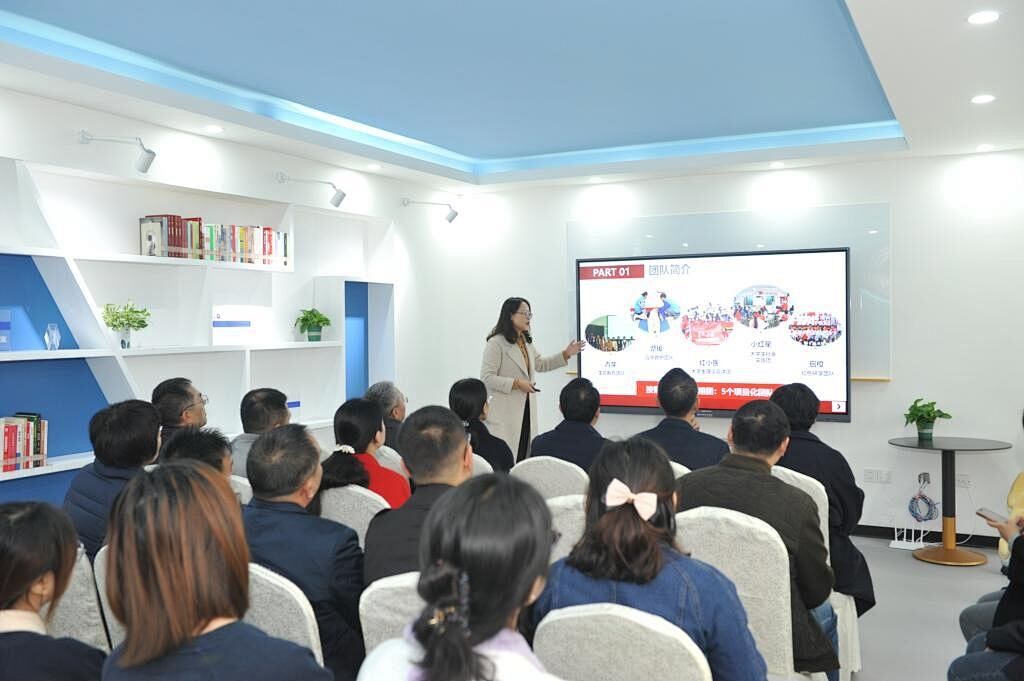Introduction: The Growing Importance of Specialist Orthotics Manufacturers
In recent years, the significance of orthotics in modern healthcare has grown exponentially, primarily due to their critical role in enhancing mobility for patients suffering from various conditions such as arthritis and diabetic foot syndrome. Orthotic devices are essential in improving the quality of life, offering a non-invasive solution that often reduces the need for costly surgeries. According to recent statistics, this need is rapidly increasing, as conditions such as arthritis are expected to affect roughly 78 million adults in the United States by 2040. Consequently, orthotics serve as a vital component in the healthcare system, making specialist orthotics manufacturers indispensable in providing relief and restoring function to those inhibited by physical disability or injury.
Why Orthotics Matter in Modern Healthcare
Orthotics have become a cornerstone of modern healthcare by enabling mobility for individuals with disabilities and injuries. These devices help restore movement and provide support where it's needed most. For instance, the prevalence of arthritis, which impacts millions, requires orthotic intervention to manage pain effectively and avoid further complications. Similarly, diabetic foot syndrome often necessitates orthotics to prevent ulcers and promote healing. Statistics underscore this importance; research from the CDC shows that nearly half of adults with diabetes experience mobility impairment, necessitating orthotic solutions. By alleviating pain and improving mobility, orthotics noticeably enhance the quality of life, often serving as an alternative to surgical procedures, which can be invasive and risky for certain patients.
Global Demand for Mobility Solutions
The market demand for orthotic Products has been experiencing robust growth as evidenced by various market research studies. The compound annual growth rate for the orthotics market is projected to be around 5.8% from 2020 to 2025, indicating a booming market scenario. Key demographic factors driving this upsurge include the aging population worldwide, which naturally increases the prevalence of mobility-related issues. Additionally, the rising incidence of sports-related injuries is contributing significantly to this growth. Economic conditions also play a role; in prosperous times, increased healthcare spending can drive advancements in orthotics technology and accessibility. This trend reflects the global prioritization of mobility solutions as essential healthcare provisions.
Expertise and Innovation in Orthotics Manufacturing
Cutting-Edge Technologies in Orthotic Design
In recent years, cutting-edge technologies like Computer-Aided Design (CAD) and 3D modeling have revolutionized orthotic design. These advancements allow for enhanced customization and have significantly improved the tailoring of orthotic solutions to individual patient needs. With the ability to create precise digital models of the foot or limb, healthcare providers can design orthotics that offer superior comfort and functionality. According to industry reports, the adoption of these technologies in orthotics manufacturing is steadily rising, reflecting a growing commitment to personalized patient care and technological integration in healthcare settings. This surge in adoption underscores the increasing recognition of the value these technologies bring to the field.
Advanced Materials for Enhanced Performance
Advanced materials are transforming the landscape of orthotics manufacturing, with innovations such as carbon fiber and lightweight polymers leading the way. These materials offer unmatched benefits in terms of durability and performance, making orthotic devices stronger yet lighter, which enhances patient comfort and mobility. Carbon fiber, known for its high strength-to-weight ratio, provides robustness without compromising on weight, while polymers allow for flexibility and adaptability in design. Experts within material science and orthopedics consistently laud these advancements for their substantial impact, emphasizing their role in producing orthotics that excel in both function and patient comfort.
Collaborative R&D with Academic Institutions
Collaboration between orthotics manufacturers and academic institutions plays a crucial role in driving innovation and research development. These partnerships facilitate the transition of theoretical research into practical applications, resulting in market-ready products. For instance, the University of Southampton's involvement in the Centre for Doctoral Training in Prosthetics and Orthotics exemplifies the potential of such collaborations. Through joint research projects, academic and industry expertise converge to tackle real-world challenges, leading to breakthroughs that enhance orthotic care. The synergy between academia and industry not only speeds up innovation but also ensures that development aligns closely with patient needs and industry trends.
Quality Assurance: Ensuring Durability and Safety
High Standards in Manufacturing Processes
Maintaining high standards in manufacturing processes is crucial for specialist orthotics manufacturers to ensure product excellence. These manufacturers adopt rigorous quality control measures, including meticulous inspections and testing protocols, to guarantee that every orthotic device meets the required specifications. Industry standards such as ISO certification serve as a benchmark, providing assurance that the manufacturing processes adhere to international quality norms. These measures are pivotal in improving patient safety and satisfaction, as they significantly reduce the risk of product malfunctions and enhance the performance consistency of orthotic products.
Rigorous Testing for Long-Term Reliability
Orthotic products undergo thorough testing protocols to ensure their durability and performance over time. These testing procedures are essential to confirm the long-term reliability of orthotics, thereby minimizing failure rates and extending replacement cycles. Advanced testing technologies, such as stress testing and accelerated aging tests, are employed to simulate real-world conditions and identify potential areas of failure. The innovation in testing methodologies not only fosters the development of more reliable orthotic solutions but also reassures patients of the products' efficacy and longevity, ensuring continued trust in these critical mobility aids.
Compliance with Global Medical Regulations
Compliance with global medical device regulations is vital for orthotic manufacturers to secure market approval and ensure the safety of their products. Adhering to well-established regulations, such as those imposed by the FDA in the United States or CE marking in the European Union, involves a comprehensive compliance process. These processes include rigorous documentation, testing, and quality assurances that demonstrate the products meet the necessary standards. Non-compliance can lead to serious consequences including market withdrawal, legal repercussions, and damage to brand reputation, underscoring the importance of adhering to these regulations in the orthotics manufacturing industry.
Personalized Orthotics for Individual Needs
3D Scanning and Digital Customization
3D scanning technology has revolutionized the customization of orthotic devices by offering unprecedented precision and efficiency. This advancement allows orthotic manufacturers to capture detailed anatomical data, which is then used to create highly personalized devices tailored to individual needs. Compared to traditional methods, digital customization ensures a perfect fit, enhancing patient comfort and device functionality. In fact, studies have shown that personalized orthotic solutions, enabled by 3D scanning, lead to significantly improved patient outcomes, with increased satisfaction ratings and reduced time for adjustments. This technological leap not only optimizes the manufacturing process but also elevates the standard of care given to each patient.
Tailoring Solutions for Athletes and Chronic Conditions
Orthotics manufacturers are increasingly focusing on providing tailored solutions for athletes and individuals with chronic conditions to optimize performance and comfort. For athletes, customized orthotics are designed to enhance stability, improve balance, and prevent injuries, thereby boosting their overall performance. Similarly, for individuals managing chronic conditions, orthotic customization is essential to meet unique biomechanical needs and alleviate discomfort. The process involves a comprehensive assessment of individual requirements, followed by precise manufacturing using advanced materials and techniques. Case studies underline the effectiveness of these tailored solutions, showing significant improvements in mobility and comfort, ultimately enhancing the quality of life for these patients.
Efficient Production and Scalable Solutions
Lean Manufacturing for Faster Turnaround
Lean manufacturing principles have significantly impacted orthotics production by streamlining processes and eliminating inefficiencies. These practices focus on reducing waste and optimizing resources, leading to faster turnaround times and lower production costs. Companies adopting lean methodologies witness benefits such as improved lead times, which enhance their ability to meet customer demands swiftly. Additionally, lean manufacturing contributes to substantial cost savings by reducing inventory and simplifying the production process. Enhanced productivity metrics from firms leveraging lean strategies underscore its value in the orthotics field, enabling them to better serve patients with timely solutions.
Automation in Orthotics Production
Automation and robotics are revolutionizing orthotics production, enabling manufacturers to achieve unparalleled precision, speed, and cost-effectiveness. By integrating automated systems, companies can optimize production processes, resulting in increased output with fewer errors. Automation streamlines tasks, ensuring orthotic devices are produced quickly and accurately, while significantly reducing manual labor costs. For instance, facilities that have embraced automation report higher productivity rates and lower error margins, illustrating the transformative impact of technology on the industry. These advancements not only improve operational efficiency but also enhance the overall quality of orthotic products, meeting the needs of patients with exacting standards.
Frequently Asked Questions (FAQ)
What are orthotics and why are they important in healthcare?
Orthotics are devices designed to enhance mobility and support for individuals with disabilities or injuries. They are important in healthcare because they improve quality of life by managing pain and enhancing movement, often serving as alternatives to surgical interventions.
How does 3D scanning improve orthotic customization?
3D scanning enhances orthotic customization by capturing detailed anatomical data, enabling the creation of highly personalized devices that provide a perfect fit, improving both comfort and functionality for the patient.
What role do collaboration and advanced materials play in orthotic manufacturing?
Collaborations with academic institutions and the use of advanced materials such as carbon fiber and polymers are crucial for innovation in orthotics manufacturing. They lead to the development of durable, comfortable, and effective orthotic devices.
How do orthotics manufacturers maintain high standards of quality and safety?
Manufacturers maintain high standards through rigorous quality control, compliance with global medical regulations, and extensive testing to ensure orthotic products are safe, durable, and meet international standards.

 EN
EN









































